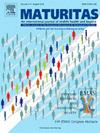The implications of bioelectrical impedance vector analysis in older adults with hip fractures
IF 3.9
2区 医学
Q2 GERIATRICS & GERONTOLOGY
引用次数: 0
Abstract
Objectives
This study used bioelectrical impedance vector analysis to assess body composition in older adults with hip fractures, comparing results with reference populations.
Study design
This cross-sectional study included patients aged 65 years or more who had undergone surgery for hip fracture and baseline bioelectrical impedance analysis at 50 kHz. Using raw impedance data, bioelectrical impedance vector analysis was conducted, calculating phase angle and analyzing resistance (R) and reactance (Xc) relative to height (R/H and Xc/H) on RXc graphs.
Main outcome measures
Men and women were compared with reference populations using confidence ellipses. Individual vectors were plotted against 50 %, 75 %, and 95 % tolerance ellipses and compared with international references matched for age and body mass index and a young adult group, further differentiated by sarcopenia status.
Results
Among 103 patients with hip fracture (24 men, 79 women), confidence ellipses showed significant differences from reference populations (P < 0.001), with reduced Xc and lower phase angle (men: 4.3 ± 1.5°; women: 3.8 ± 1.0°), consistent with higher R/H and lower Xc/H. Most vectors lay outside the 75 % and 95 % tolerance ellipses, primarily in the lower-right and upper-right quadrants, indicating body cell mass loss and water imbalance. Only 8.3 % of men and 12.7 % of women fell within the 75 % tolerance ellipse of community-dwelling older adults. Sarcopenic patients showed greater rightward displacement, indicating more severe muscle wasting and dehydration.
Conclusions
Older hip fracture patients showed a distinct pattern on bioelectrical impedance vector analysis indicating frailty and malnutrition. Bioelectrical impedance vector analysis may effectively screen for body composition changes and nutritional status, supporting timely, multidisciplinary interventions.
老年髋部骨折患者生物电阻抗矢量分析的意义。
目的:本研究使用生物电阻抗矢量分析来评估老年髋部骨折患者的身体成分,并将结果与参考人群进行比较。研究设计:这项横断面研究包括65岁或65岁以上接受髋部骨折手术的患者,并在50 kHz进行基线生物电阻抗分析。利用原始阻抗数据,进行生物电阻抗矢量分析,计算相角,分析RXc图上相对于高度(R/H和Xc/H)的电阻(R)和电抗(Xc)。主要结果测量:使用置信椭圆比较参考人群中的男性和女性。根据50%、75%和95%耐受椭圆绘制个体载体,并与年龄和体重指数匹配的国际参考文献以及青壮年组进行比较,进一步根据肌肉减少症状态进行区分。结果:在103例髋部骨折患者中(男性24例,女性79例),置信椭圆与参考人群有显著差异(P)。结论:老年髋部骨折患者在生物阻抗矢量分析中表现出明显的虚弱和营养不良模式。生物电阻抗矢量分析可以有效地筛选身体成分变化和营养状况,支持及时的多学科干预。
本文章由计算机程序翻译,如有差异,请以英文原文为准。
求助全文
约1分钟内获得全文
求助全文
来源期刊

Maturitas
医学-妇产科学
CiteScore
9.10
自引率
2.00%
发文量
142
审稿时长
40 days
期刊介绍:
Maturitas is an international multidisciplinary peer reviewed scientific journal of midlife health and beyond publishing original research, reviews, consensus statements and guidelines, and mini-reviews. The journal provides a forum for all aspects of postreproductive health in both genders ranging from basic science to health and social care.
Topic areas include:• Aging• Alternative and Complementary medicines• Arthritis and Bone Health• Cancer• Cardiovascular Health• Cognitive and Physical Functioning• Epidemiology, health and social care• Gynecology/ Reproductive Endocrinology• Nutrition/ Obesity Diabetes/ Metabolic Syndrome• Menopause, Ovarian Aging• Mental Health• Pharmacology• Sexuality• Quality of Life
 求助内容:
求助内容: 应助结果提醒方式:
应助结果提醒方式:


